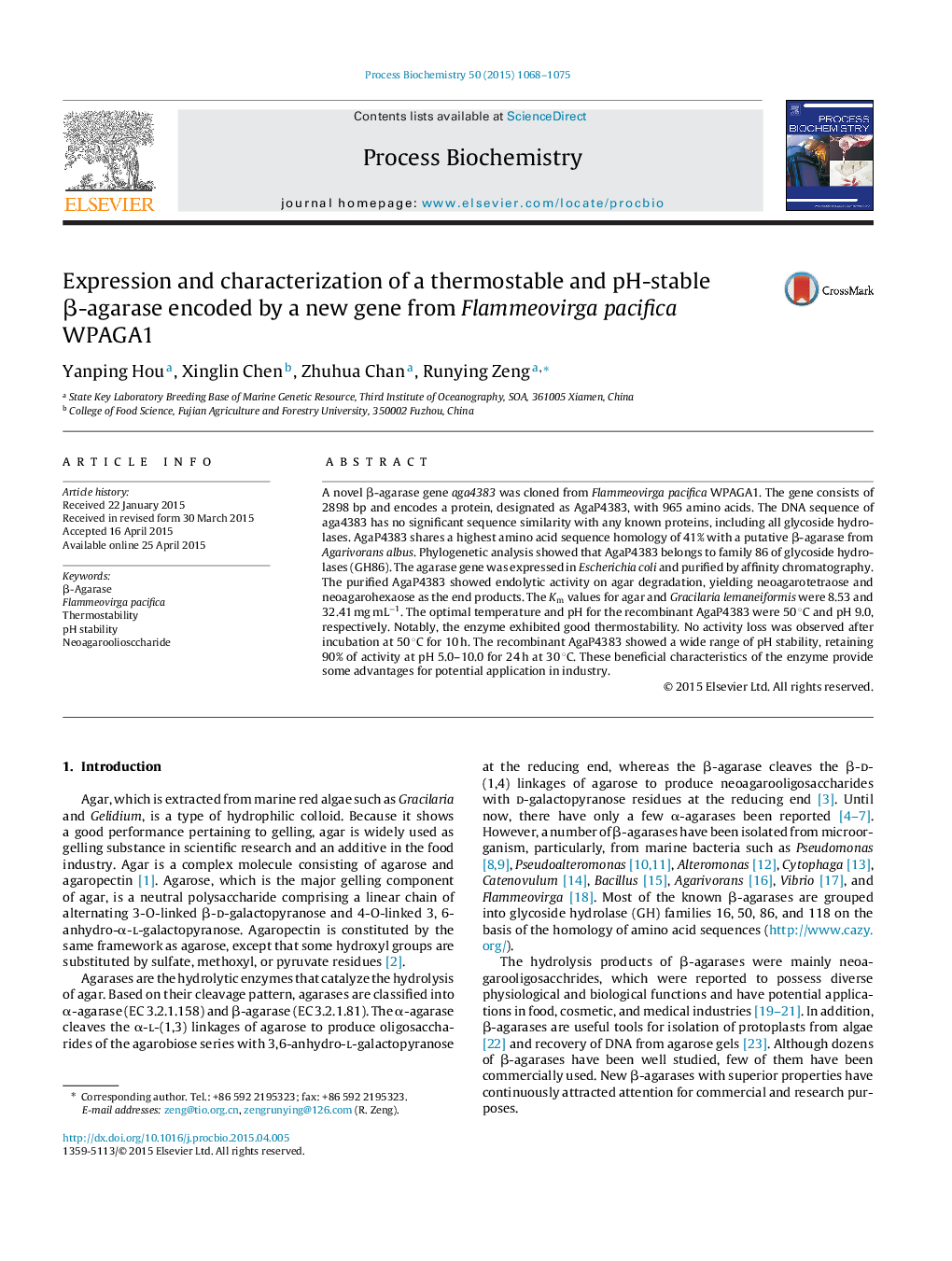| Article ID | Journal | Published Year | Pages | File Type |
|---|---|---|---|---|
| 34353 | Process Biochemistry | 2015 | 8 Pages |
•A novel GH86 β-agarase gene was expressed and characterized.•The amino acid sequence of the agarase shares a highest homology of only 41%.•The agarase can hydrolyse Gracilaria lemaneiformis directly.•The agarase shows good thermostability and pH stability.•The agarase has potential application in industry.
A novel β-agarase gene aga4383 was cloned from Flammeovirga pacifica WPAGA1. The gene consists of 2898 bp and encodes a protein, designated as AgaP4383, with 965 amino acids. The DNA sequence of aga4383 has no significant sequence similarity with any known proteins, including all glycoside hydrolases. AgaP4383 shares a highest amino acid sequence homology of 41% with a putative β-agarase from Agarivorans albus. Phylogenetic analysis showed that AgaP4383 belongs to family 86 of glycoside hydrolases (GH86). The agarase gene was expressed in Escherichia coli and purified by affinity chromatography. The purified AgaP4383 showed endolytic activity on agar degradation, yielding neoagarotetraose and neoagarohexaose as the end products. The Km values for agar and Gracilaria lemaneiformis were 8.53 and 32.41 mg mL−1. The optimal temperature and pH for the recombinant AgaP4383 were 50 °C and pH 9.0, respectively. Notably, the enzyme exhibited good thermostability. No activity loss was observed after incubation at 50 °C for 10 h. The recombinant AgaP4383 showed a wide range of pH stability, retaining 90% of activity at pH 5.0–10.0 for 24 h at 30 °C. These beneficial characteristics of the enzyme provide some advantages for potential application in industry.
Graphical abstractFigure optionsDownload full-size imageDownload as PowerPoint slide
